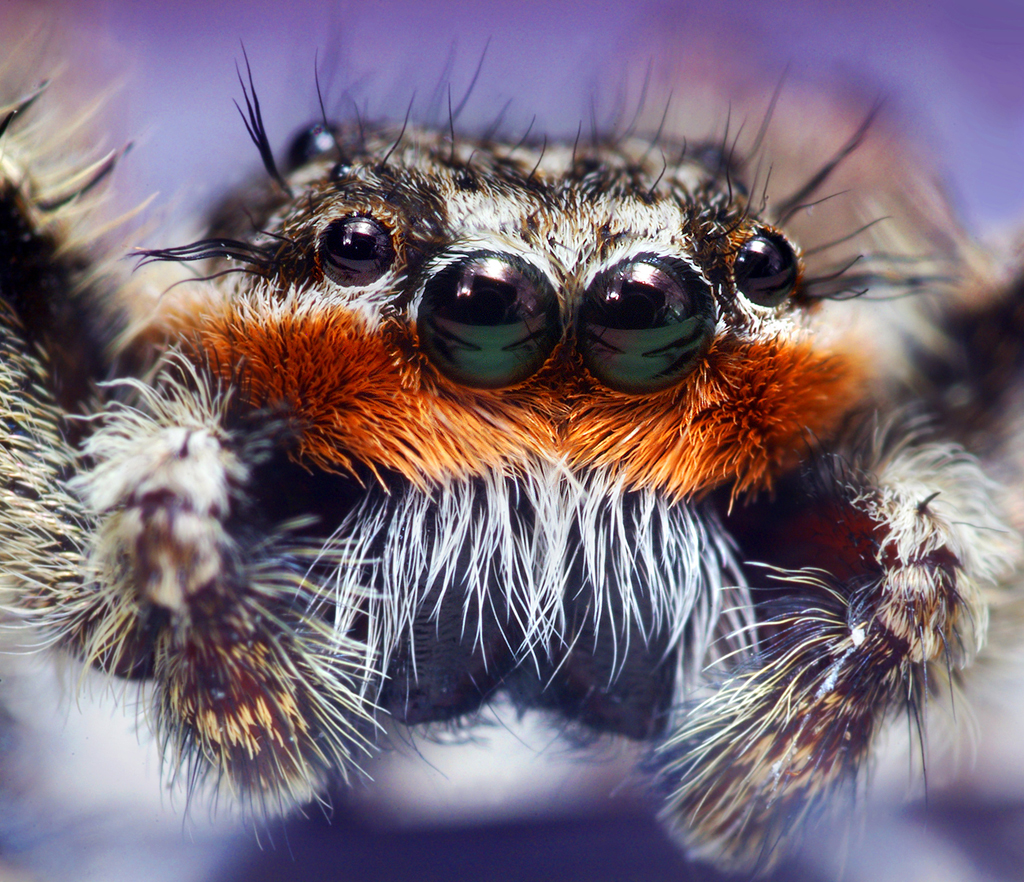Platycryptus Undatus on:
[Wikipedia]
[Google]
[Amazon]
''Platycryptus undatus'', also called the tan or familiar jumping spider, is a
by Cole, Noah. Ontario Nature Magazine. 2017. pp. 60-61
 ''Platycryptus undatus'' can be found in
''Platycryptus undatus'' can be found in
Picture of ''P. undatus''
(free for noncommercial use) * Good information on spiders' lifestyles from th
* Lucian K. Ross: ''A jumping spider feeding on an earthworm.'' Peckhamia, 71, 1, S. 1-2, September 200
PDF
{{Taxonbar, from=Q291947 Salticidae Spiders of North America Spiders of Central America Spiders described in 1778
species
A species () is often defined as the largest group of organisms in which any two individuals of the appropriate sexes or mating types can produce fertile offspring, typically by sexual reproduction. It is the basic unit of Taxonomy (biology), ...
of jumping spider
Jumping spiders are a group of spiders that constitute the family (biology), family Salticidae. , this family contained over 600 species description, described genus, genera and over 6,000 described species, making it the largest family of spide ...
(family Salticidae), native
Native may refer to:
People
* '' Jus sanguinis'', nationality by blood
* '' Jus soli'', nationality by location of birth
* Indigenous peoples, peoples with a set of specific rights based on their historical ties to a particular territory
** Nat ...
to North America.A guide to some of Ontario's spidersby Cole, Noah. Ontario Nature Magazine. 2017. pp. 60-61
Description
Tan jumping spiders can be identified by their mottled tan coloration, thin bodies and chevron patterning on their abdomens. The tan jumping spider's thin body allows them to hide themselves under the loosened bark of trees and in other tight places. The prominent chevron-like pattern on their abdomens serves to break up their visual profile and make them more difficult to distinguish on mottled surfaces. Females of this species are between 10 and 13 mm in body length, and males range from 8.5 to 9.5 mm. Tan jumping spiders, like many jumping spider species, prefer to hunt on vertical surfaces and can frequently be found on the trunks of trees or on the walls of buildings. These spiders are not inclined to bite, though they can deliver a defensive bite if they are pinched or squeezed. Eggs are laid and hatch during the summer, and adults and other stages overwinter in their individual silken shelters. Although the shelters are built separately and keep the spiders out of direct contact with each other, Kaston reports that as many as fifty spiders may crowd their shelters for hibernation together, so tightly that they form a continuous blanket under the loose bark of a standing tree.Distribution
 ''Platycryptus undatus'' can be found in
''Platycryptus undatus'' can be found in North
North is one of the four compass points or cardinal directions. It is the opposite of south and is perpendicular to east and west. ''North'' is a noun, adjective, or adverb indicating Direction (geometry), direction or geography.
Etymology
T ...
and Central America
Central America is a subregion of North America. Its political boundaries are defined as bordering Mexico to the north, Colombia to the southeast, the Caribbean to the east, and the Pacific Ocean to the southwest. Central America is usually ...
. The distribution of this species ranges from the Eastern States and adjacent Canada
Canada is a country in North America. Its Provinces and territories of Canada, ten provinces and three territories extend from the Atlantic Ocean to the Pacific Ocean and northward into the Arctic Ocean, making it the world's List of coun ...
, to Texas
Texas ( , ; or ) is the most populous U.S. state, state in the South Central United States, South Central region of the United States. It borders Louisiana to the east, Arkansas to the northeast, Oklahoma to the north, New Mexico to the we ...
and Wisconsin
Wisconsin ( ) is a U.S. state, state in the Great Lakes region, Great Lakes region of the Upper Midwest of the United States. It borders Minnesota to the west, Iowa to the southwest, Illinois to the south, Lake Michigan to the east, Michig ...
.
References
External links
*Picture of ''P. undatus''
(free for noncommercial use) * Good information on spiders' lifestyles from th
* Lucian K. Ross: ''A jumping spider feeding on an earthworm.'' Peckhamia, 71, 1, S. 1-2, September 200
{{Taxonbar, from=Q291947 Salticidae Spiders of North America Spiders of Central America Spiders described in 1778